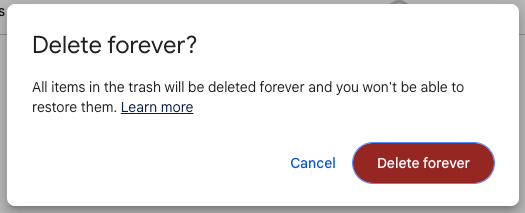Faculty, staff and students provisioned with a Google Workspace account have a storage limit of 5 gigabytes (GB) across all apps. If you go above the storage limit, your account activity will be limited until you get under that quota. Use this page as a resource if you need assistance managing your Google Drive and getting it below your 5GB quota.
There are several steps OIT recommends that you go through to manage your data, including:
- Check your quota
- Sort by file size to delete larger files first
- Understanding what's in My Drive vs. Shared with me
- Check migrated files
- Delete and empty trash
Looking for resources on saving files from departing colleagues or alumni? Visit the Review and Save Google Drive files page for our tips on saving recently accessed files, searching Drive by owner, checking collaborative folders and more.
Check your quota
Check how much data you need to reduce by visiting your Google Workspace storage page. This will show not only how much storage you're using, but where it's located within your Google account.
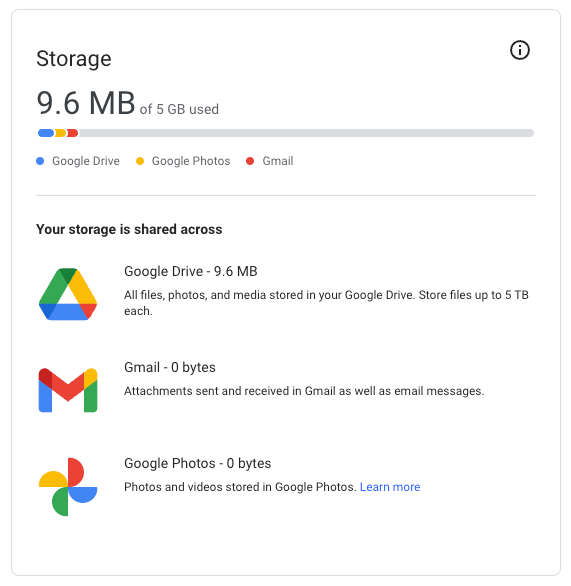
Sort by file size
Deleting large files is a great way to quickly reduce your total storage. To sort the files in your Google Drive by size, log in to Google Drive and go to the Storage tab on the left hand side of the screen. This will show your total storage and also list the files in your Drive from largest to smallest.
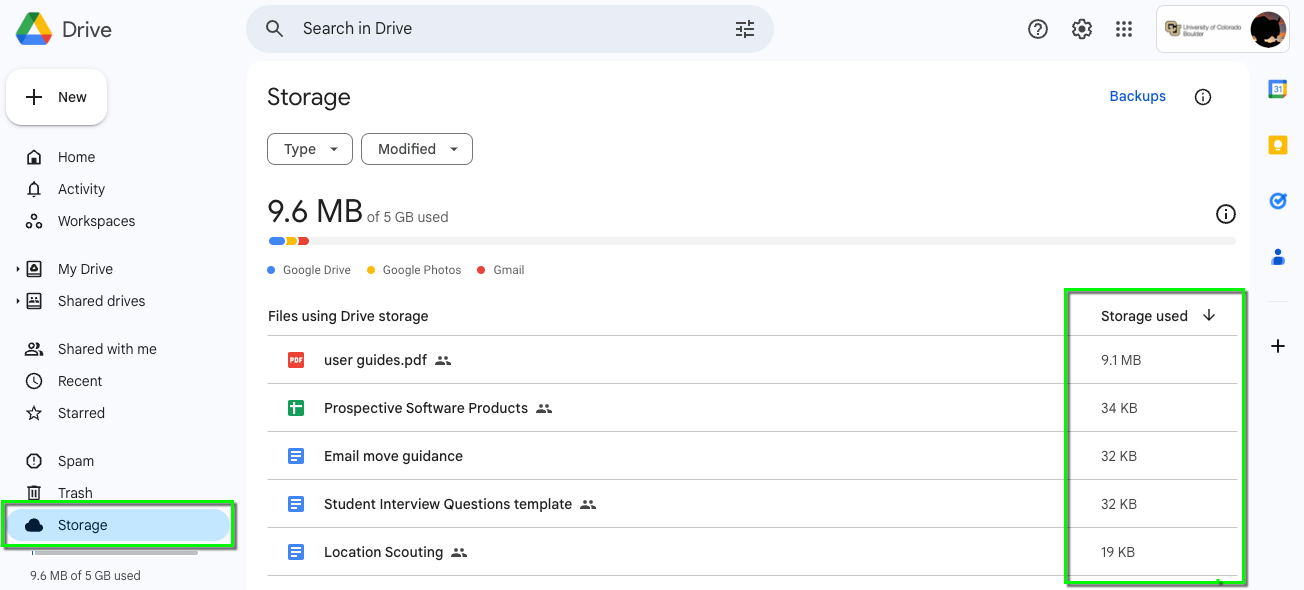
Right-click a file and select move to trash to delete. You can select multiple files at once using the shift or command key.
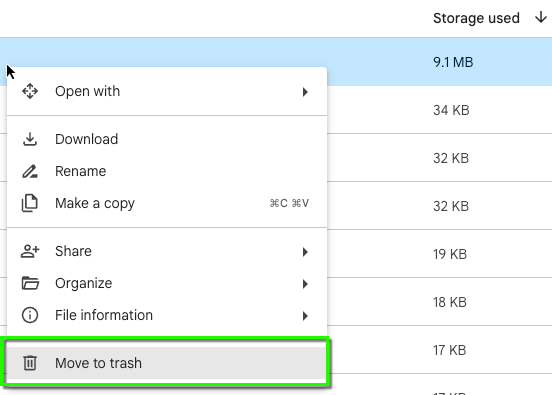
My Drive vs. Shared with me
Not all of the files listed in your drive belong to you. Even if you've recently used a file, or refer to it often, it may belong to someone else and therefore not count toward your storage quota. Here are our tips for making sure you're in the right folder and managing your data appropriately.
- Start with My Drive: When trying to reduce your drive, start with the My Drive section of Google Drive so you're focusing on data that counts toward your quota. You can also sort files by owner to look at your files first.
- Shared with me and Collaborative Folders: Files in the Shared with me section do not count toward your quota unless you have uploaded/created files in a collaborative folder. Collaborative folders are folders that have been created by another user and Shared with you. Look through the folders in Shared with me to find this data. Alternatively, when looking at files listed in the Storage tab, select a file to see the file path at the bottom of the screen:
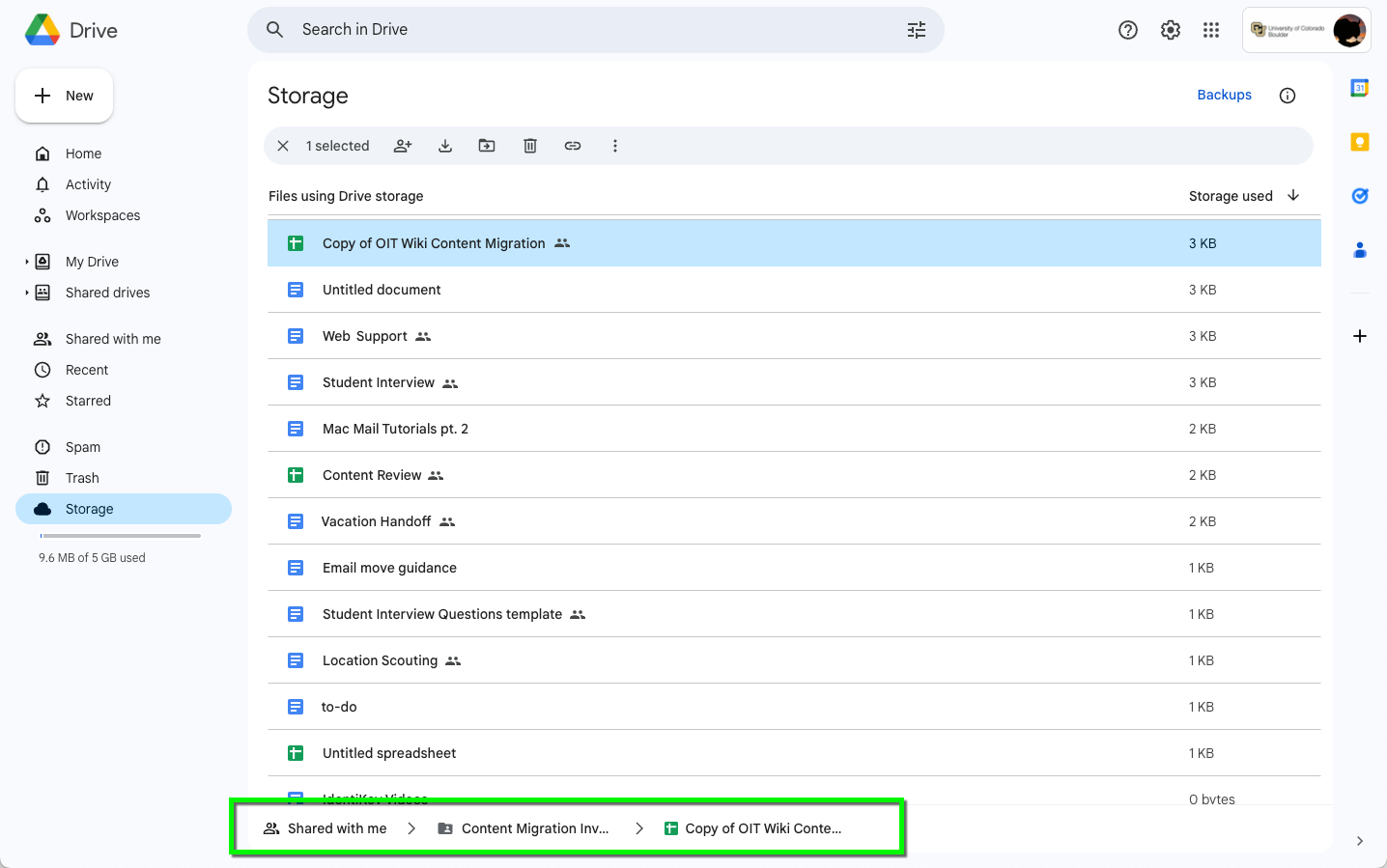
If you need to maintain access to a file that is owned by someone who has left or plans to leave CU Boulder, be sure to save or download a copy before you lose access. Visit the Review and Save Google Drive files page for additional tips.
Check migrated files
Over the course of the Google storage reduction project, some files OIT migrated to OneDrive were not deleted from Google Drive. If you're over or near the 5GB limit, it's a good idea to compare the files in both places to make sure nothing is duplicated.
- Open Google Drive and OneDrive in two separate browser windows.
- Review your files in both spots to find any duplicated data. Data migrated to OneDrive from Google will be located in the My Files area in a folder named G.
- If duplicated files are found, check the last edited timestamp in both locations and delete the older file no matter where it is.
- If the newer file is in Google, download the file and re-upload to OneDrive.
- Finally, delete the file in Google Drive and empty your trash.
Delete files and empty trash
After moving files to your trash that you no longer need, be sure to empty your trash. Google empties your trash every 30 days, but to gain storage space back immediately, clear out your trash.
Select Trash on the left hand side menu. Confirm all can be deleted and select Empty Trash.
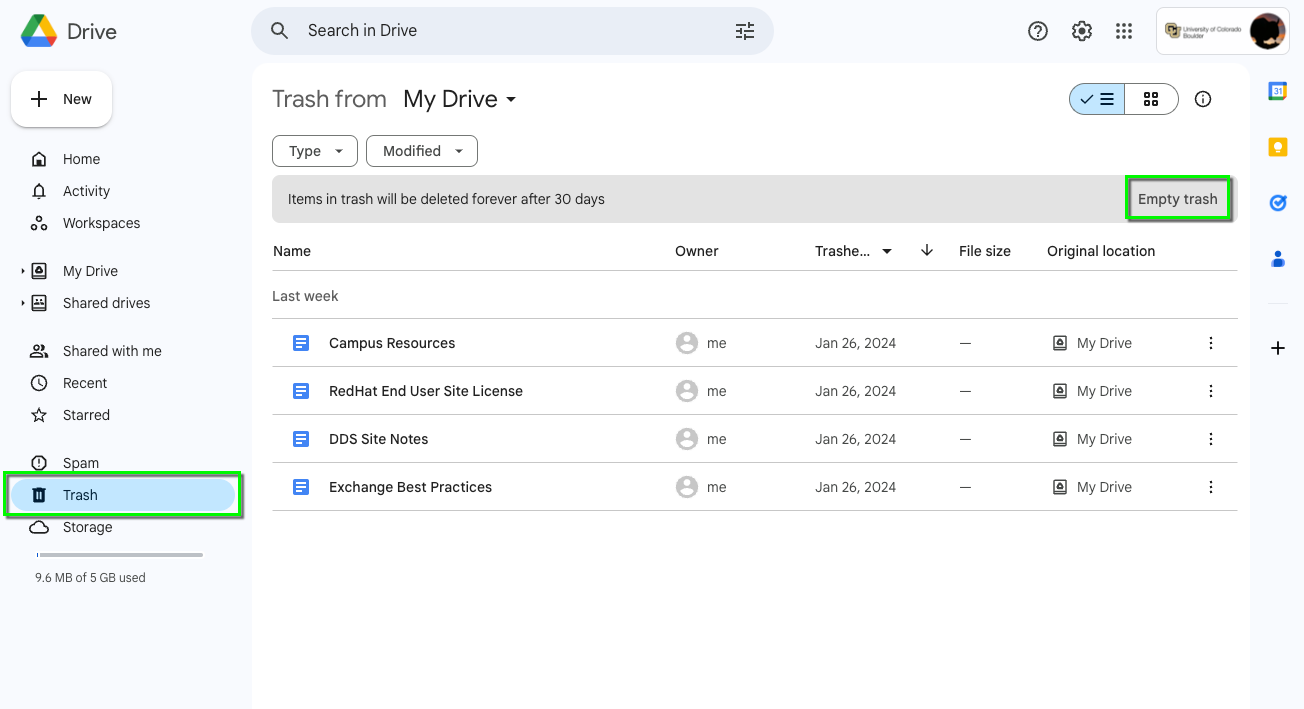
You will be prompted to confirm this choice.
